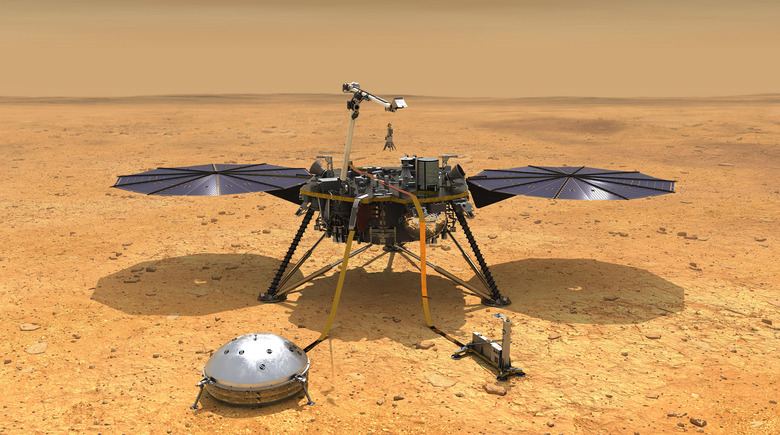NASA Says InSight Lander's Survival Relies On Martian Weather Now
The tales surrounding NASA's InSight Lander have been quite the rollercoaster. From glitches in the lander to dust-caked solar panels, the Martian research craft has been put through the wringer. Earlier this year, NASA shared that InSight was dying and that the space agency had no plans to save it. Now, InSight's survival is fully dependent on the Martian weather, sources tell Space.com.
NASA's InSight Lander took its last selfie on the Martian surface earlier this year. Despite being caked in Martian dust and running out of power, NASA decided that it would keep the lander going as long as it could – a choice that has paid off with recordings of meteorites hitting Mars and more. How long the InSight Lander will survive is unclear; it all comes down to how bad the weather is.
When NASA finally gave up on InSight's survival just a few months ago, the space agency said it was only a matter of time until dust would completely cover any remaining pieces of the solar panels. But, it would seem the weather on Mars has been in our favor, as InSight continues to hold on.
Additionally, with the way things are going now, NASA says that InSight could survive until January. But—and this is a big but—the weather has to remain as calm as it has over the past few weeks. This could change, though, especially if the region the lander is situated in experiences a dust storm or anything of the sort. If that happens, InSight's survival isn't guaranteed.
Currently, InSight's ability to generate power is based on two primary things – the dust on the solar panels, and the amount of dust in the air. If a dust storm kicks up, then it will threaten InSight's survival immensely because it will cake on more dust to the solar panels, and fill the air with dust, too. As such, the only real hope right now is that InSight will continue holding on.
The lander may survive through the next few months if it can continue to hold out with good weather and low dust levels in the atmosphere. But, the InSight Lander's chances of surviving beyond that time are teetering on the verge of impossible.
More space coverage: Watch NASA successfully crash the DART spacecraft into an asteroid.
